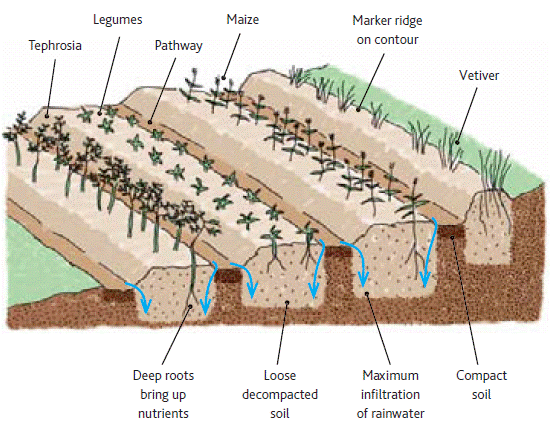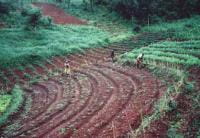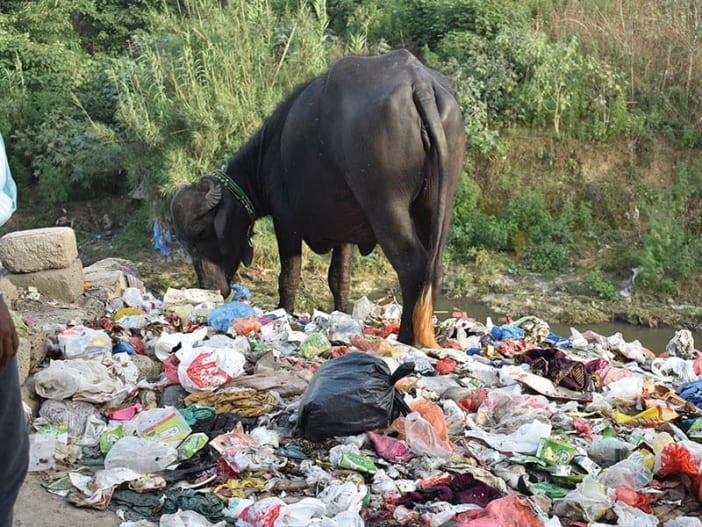If you walk in the hills of Nkhata Bay district, Malawi, you will see steep hillsides with the trees chopped down and burnt. Further on you will see cultivation using small mounds in which cassava cuttings are planted. The ash from the burnt trees will give an initial boost of fertility, but very soon erosion will take over. No method of cultivation could cause the soil to be washed away more quickly than this. When heavy rain falls, water swirls between the mounds, carrying away the fertile top soil and leaving only coarse sand and stones.
A step in the right direction
This method has been replaced throughout most of Malawi by cultivation on ridges. But the effect on the soil is almost as bad. This is because the ridges do not follow the contours as they should and are usually left open at the ends. As the ridges are constantly walked on by the people that are hoeing them, the soil is packed down hard. This stops water entering the soil after heavy rainfall, so the roots are not watered, the water is wasted and soil fertility is progressively lost.
Is there a way of cultivating the soil that requires less labour but improves the soil and helps it to grow more and healthier crops?
A group of six volunteers in Msongwe village, Malawi, is responsible for giving home-based care to the sick people in the village. They got a piece of land on which to grow crops to improve the diet of their patients. They were anxious to avoid the loss of soil, which they know is damaging so much of the land. So, to conserve the soil and build up its fertility, they put into practice a system based on the advice of an expert in agricultural production.
Permanent deep bed method
The first requirement of soil care is that, even after heavy rainfall, the maximum amount of water should sink into the ground and none should run over the surface.
First, a line level was used to mark the contours on the fairly steep piece of land, and large marker ridges were constructed (see illustration and photograph). Next, permanent deep beds were prepared. These beds run parallel with the marker ridges, following the contour, and the soil is loosened to a depth of 60cm (about twice the distance from elbow to wrist) using a pickaxe. This breaks up the layer of compacted soil which usually forms as a result of the traditional method of field work mentioned earlier. By contrast, the deep beds are never trodden and the loose soil encourages all rainfall to soak into the soil and reach the roots.
Making deep beds requires a lot of labour, but once constructed, they do not need the year-by-year preparation of the traditional ridge system. Digging and turning the soil (tillage) is not necessary. The deep beds only need light surface weeding. If possible, cover them with a mulch of crop residues, leaves and grass. This will provide crops with nutrients, keep moisture in the soil and protect the soil from weeds.
The Msongwe home-based care group now has a garden where the rainfall sinks into the soil where it is needed. There will be:
- no flooding
- no erosion
- no silting
- no loss of soil.
The Msongwe group does not use chemical fertiliser. They maintain soil fertility by making and applying compost, rotating the crops and growing agroforestry species such as tephrosia, which bring nutrients to the surface from deep in the soil.
John Crossley is the Conservation Officer for the Wildlife and Environmental Society, Mzuzu, Malawi.
Footsteps 15 on Soil erosion and Footsteps 70 on Agriculture and climate change both share further information on this topic. The instructions on how to measure contours using an A-frame are particularly relevant.










